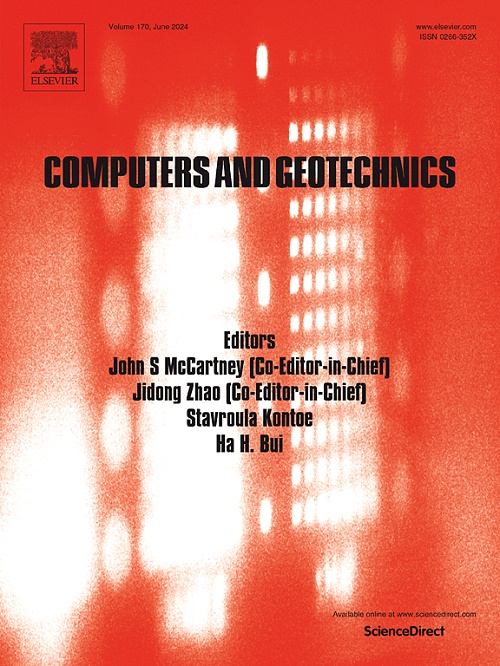A compressive rate-dependent hypoplastic constitutive model and numerical application in SPH for granular soil
IF 5.3
1区 工程技术
Q1 COMPUTER SCIENCE, INTERDISCIPLINARY APPLICATIONS
引用次数: 0
Abstract
The mechanical behavior of granular soil is significantly influenced by the strain rate to which it is subjected. However, there is currently no widely applicable constitutive model that effectively captures the rate-dependent behavior of granular soil across the spectrum from quasi-static to extreme dynamic loading conditions. This paper presents the findings from both physical and numerical experiments, demonstrating that particle strength displays three distinct regimes over a strain rate range of 10−6 to 105 s−1 resulting from the competition between coexisting thermally activated and macro-viscous mechanisms. Given that particle strength is associated with the granular hardness (hs), this study proposes a compressive rate-dependent hypoplastic constitutive (CRDHC) model by establishing a rate-dependent hs. Furthermore, the significantly elevated initial stiffness resulting from high strain rates and the concave limit stress surface induced by denser states are addressed through small strain stiffness and stress transformation, respectively. The proposed CRDHC model is validated through a one-dimensional quasi-static test and a Split Hopkinson Pressure Bar (SHPB) test, and it is implemented numerically using the Smoothed Particle Hydrodynamics (SPH) meshfree method. The method incorporates the substepping scheme with error control and stability correction at minimal stress states to establish a comprehensive framework for granular soil under low to high strain rates. Both discharge of silo and high-velocity penetration are simulated to validate the efficiency and accuracy of the framework in capturing the rate-dependent response in large deformation problems.
求助全文
约1分钟内获得全文
求助全文
来源期刊

Computers and Geotechnics
地学-地球科学综合
CiteScore
9.10
自引率
15.10%
发文量
438
审稿时长
45 days
期刊介绍:
The use of computers is firmly established in geotechnical engineering and continues to grow rapidly in both engineering practice and academe. The development of advanced numerical techniques and constitutive modeling, in conjunction with rapid developments in computer hardware, enables problems to be tackled that were unthinkable even a few years ago. Computers and Geotechnics provides an up-to-date reference for engineers and researchers engaged in computer aided analysis and research in geotechnical engineering. The journal is intended for an expeditious dissemination of advanced computer applications across a broad range of geotechnical topics. Contributions on advances in numerical algorithms, computer implementation of new constitutive models and probabilistic methods are especially encouraged.
 求助内容:
求助内容: 应助结果提醒方式:
应助结果提醒方式:


